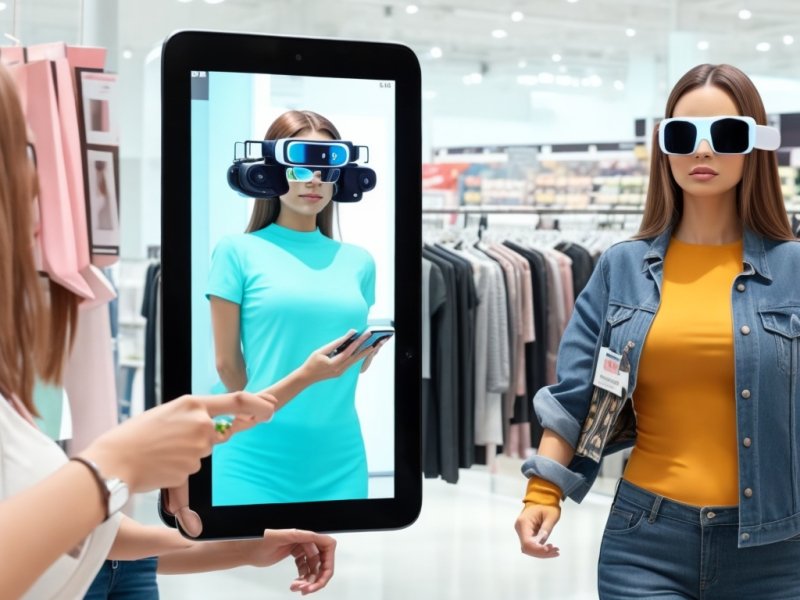
Augmented Reality in Retail: Enhancing the Shopping Experience with AR Technology
Introduction
In the fast-paced world of retail, staying ahead of the competition and meeting customer expectations are paramount. Technological advancements have revolutionized the retail landscape, and one innovation that has captured the imagination of both retailers and shoppers alike is Augmented Reality (AR). By seamlessly blending the virtual world with the real one, AR technology offers an unparalleled shopping experience, bridging the gap between imagination and reality. In this blog, we explore the transformative potential of AR in retail, how it enhances the shopping journey, and the benefits it brings to both businesses and customers.
1. What is Augmented Reality in Retail?
Augmented Reality is a cutting-edge technology that overlays virtual elements onto the real world, creating an immersive and interactive experience for users. In retail, AR allows shoppers to visualize products in their desired environment before making a purchase. By using smartphones or AR devices, customers can try out furniture in their living rooms, virtually "try on" clothes without changing, or even preview how home appliances will look in their kitchen.
2. Elevating the Shopping Experience
- Virtual Try-Ons: One of the biggest challenges in online shopping is the inability to try on clothes or accessories before buying. AR eliminates this barrier by enabling virtual try-ons. Customers can see how different outfits look on them in real-time, facilitating confident purchase decisions and reducing the likelihood of returns.
- Interactive Product Visualization: AR empowers customers to engage with products like never before. They can examine intricate details, explore color options, and even see how items function, all through the lens of their smartphones or AR glasses. This interactivity fosters a deeper connection with products, leading to higher customer satisfaction.
- Personalization and Customization: Retailers can leverage AR to provide personalized shopping experiences. By analyzing customer preferences and data, AR can recommend products tailored to individual tastes, making the shopping journey more enjoyable and relevant.
- In-Store Navigation: AR technology can enhance navigation within physical stores. Shoppers can access digital store maps, real-time product locations, and promotions through their devices, ensuring a smooth and stress-free shopping trip.
3. Boosting Sales and Customer Engagement
- Reduced Purchase Hesitation: AR diminishes doubts about product suitability, especially for high-value items. By enabling customers to envision products in their lives, they gain confidence in their choices, leading to increased conversions.
- Novelty and Word-of-Mouth Marketing: Implementing AR in retail sets businesses apart from their competitors. The novelty of the technology attracts curious shoppers and generates word-of-mouth buzz, drawing more foot traffic and online visitors.
- Data-Driven Insights: AR generates valuable data on customer behavior and preferences. Retailers can utilize this information to optimize their product offerings, marketing strategies, and store layouts, ultimately driving higher sales and customer loyalty.
4. The Future of AR in Retail
The potential applications of AR in retail are continually evolving. As the technology becomes more sophisticated and widespread, we can expect to see:
- AR-powered Social Shopping: Virtual shopping experiences where friends can virtually shop together and offer advice, making shopping more social and enjoyable.
- Enhanced Product Information: AR can provide real-time, contextual information about products, such as ingredients, materials, and sustainability credentials, empowering customers to make informed choices.
- Integration with AI and IoT: By integrating AR with Artificial Intelligence (AI) and the Internet of Things (IoT), retail environments can become even more interactive and responsive, creating hyper-personalized shopping experiences.
Conclusion
Augmented Reality is revolutionizing the retail industry, elevating the shopping experience to unprecedented levels. By enabling virtual try-ons, interactive product visualization, and personalized experiences, AR has become a powerful tool for retailers to boost sales, customer engagement, and brand loyalty. As technology continues to advance, AR's potential in retail will only grow, promising a future where shopping is not just an errand but an immersive, enjoyable, and truly memorable experience. Embracing AR is no longer an option for retailers but a necessity to stay competitive in the ever-evolving retail landscape.

Share This News